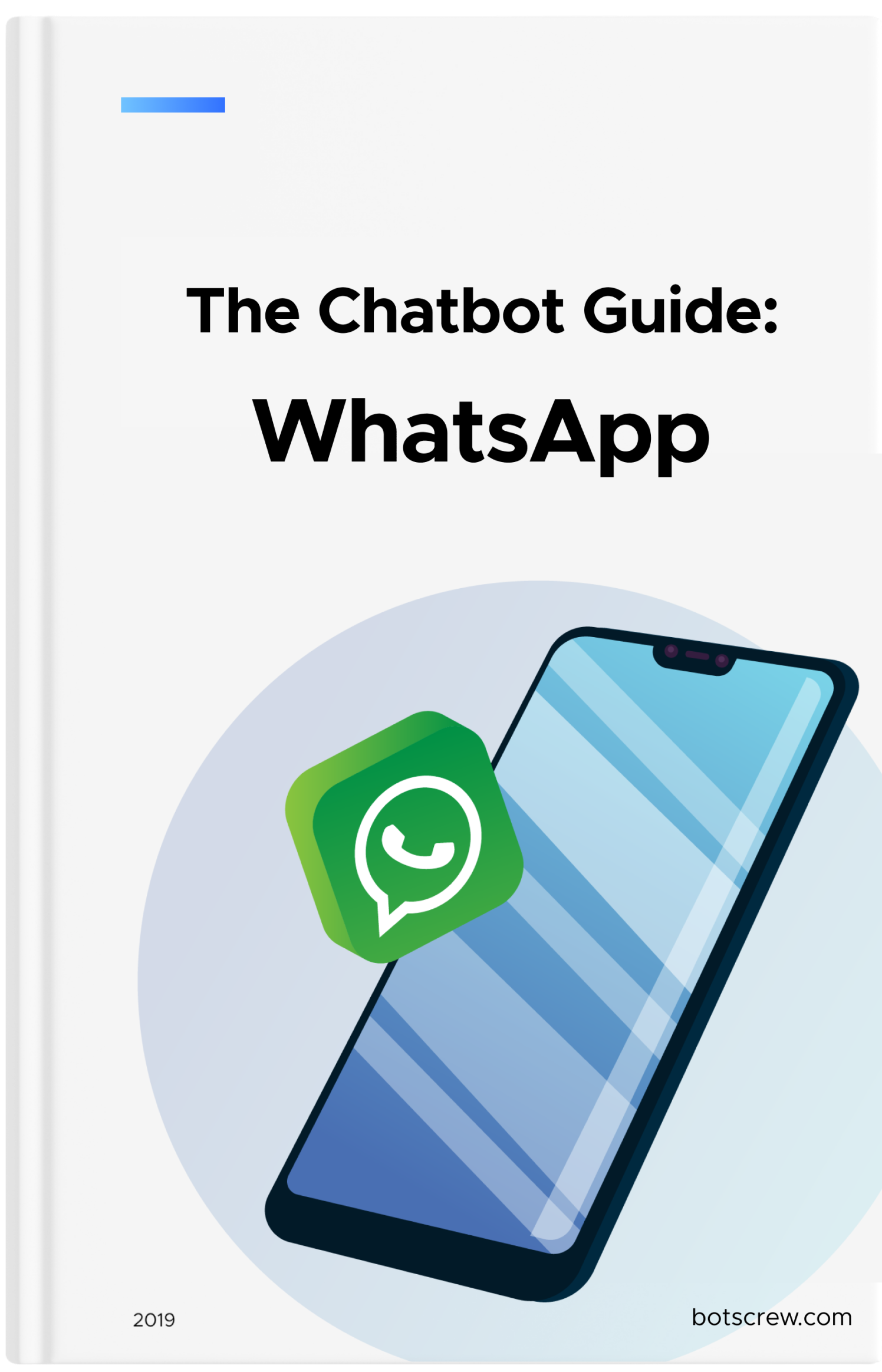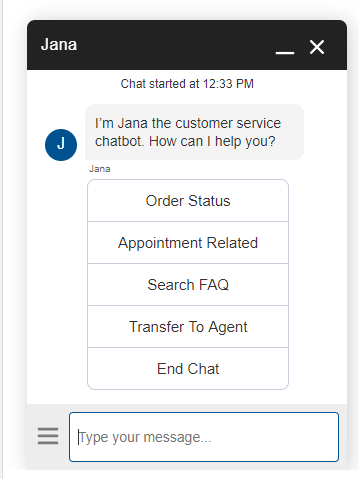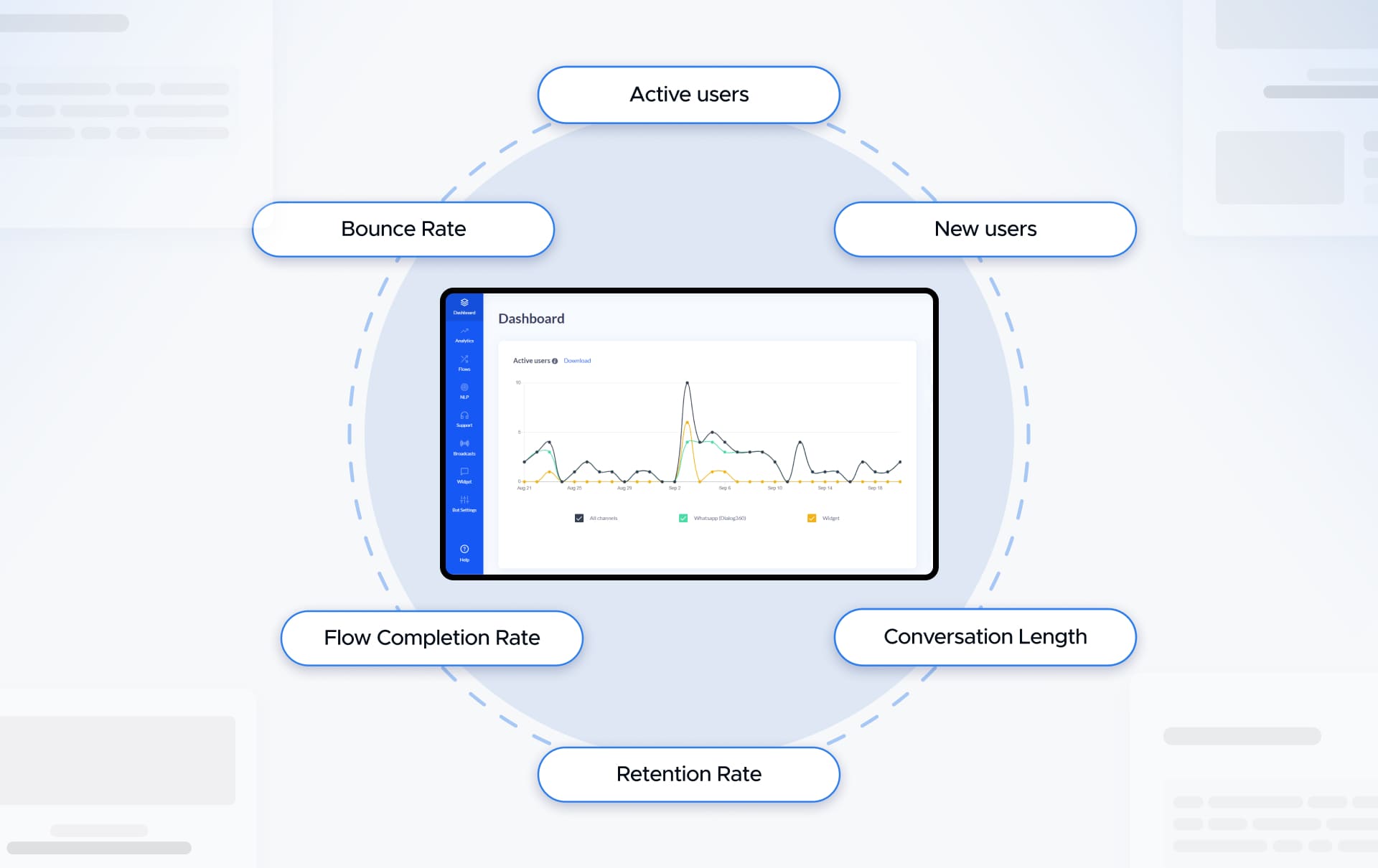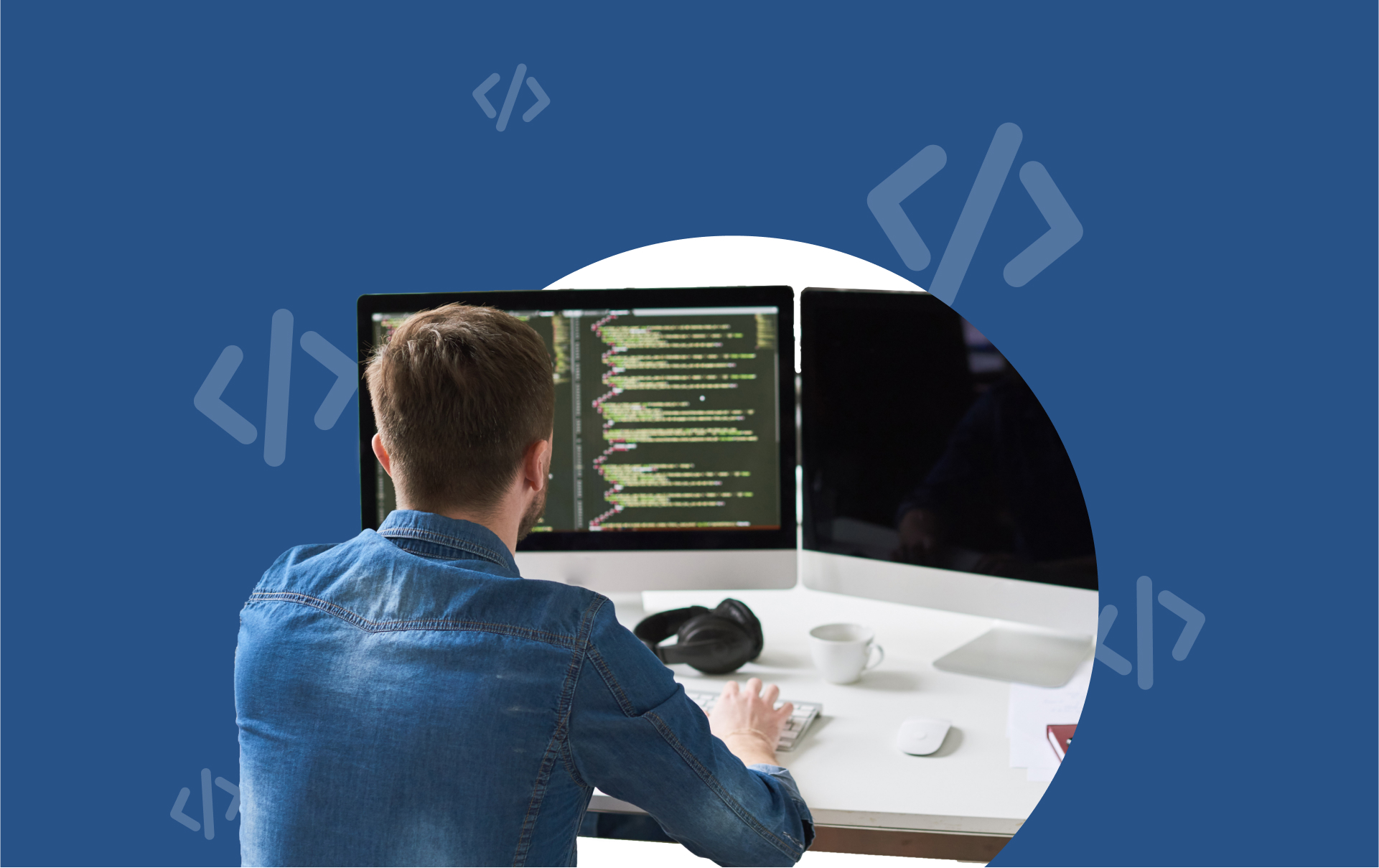Chatbot for Salesforce: The Ultimate Guide for Any Business
Using Salesforce for managing accounts and keeping information? With chatbots, you could potentially boost your customer support performance with low commitment. What are Einstein bots, custom chatbots, and how to implement a Salesforce chatbot? Here's your full guide to chatbots for Salesforce.
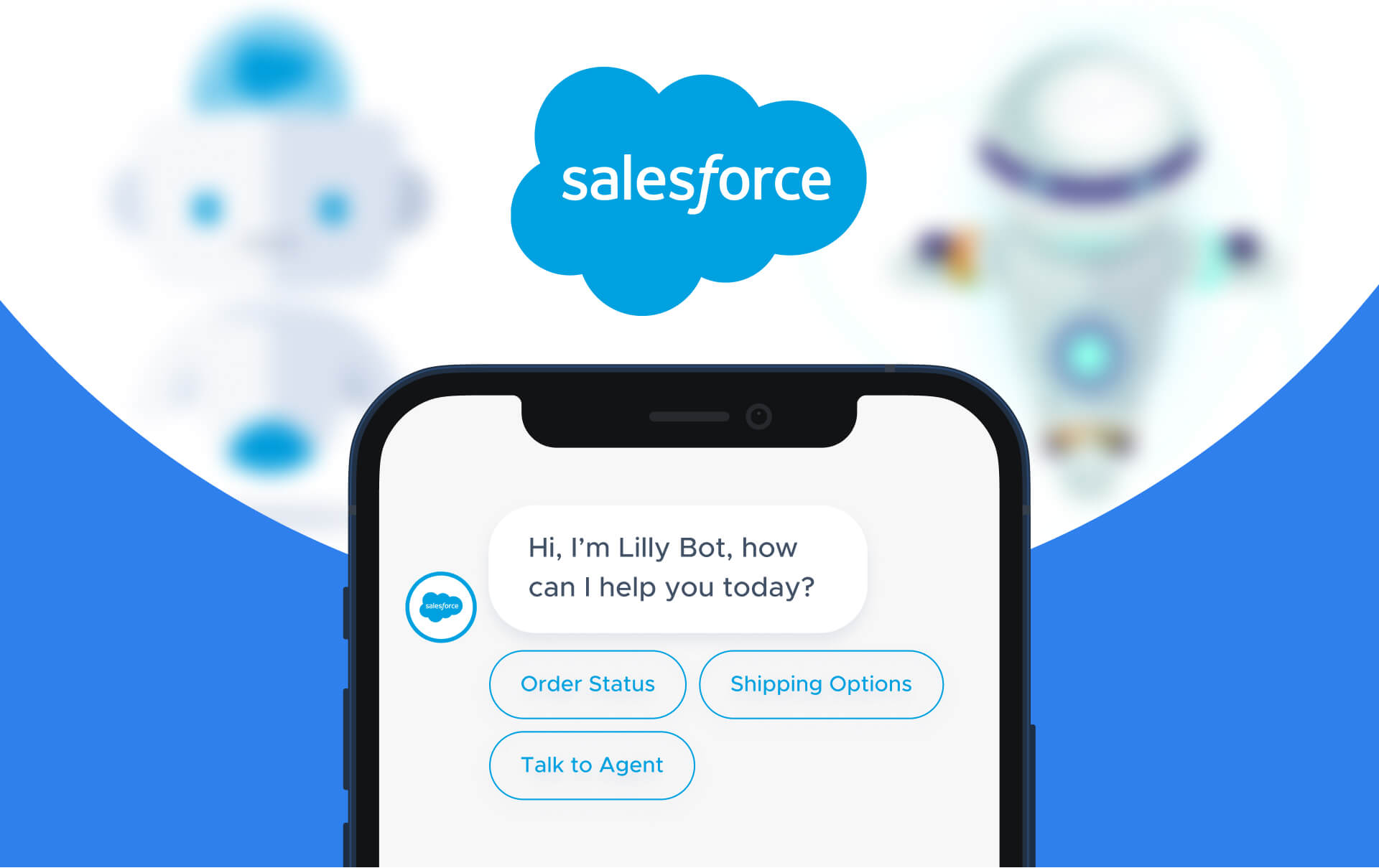
Salesforce is used by over 176K websites worldwide, being one of the most popular CRMs on the market. It is a flexible infrastructure with advanced data security that offers everything employees need to close sales, conveniently manage accounts, and provide support.
In 2016, Salesforce implemented Salesforce Einstein, the first comprehensive AI for CRM. It’s a set of AI technologies available across the Salesforce Lightning platform and various Salesforce cloud products.
Since that time, any business can build chatbots, both natively & via third-party providers.
Why do businesses implement them, and how to build a Salesforce chatbot?
Check out this full guide on chatbots for Salesforce.
Contents
- What is a salesforce chatbot
- How to use chatbots for Salesforce
- How to implement a chatbot in Salesforce
- Step One: Research chatbot features and set measurable goals
- Step Two: Pick the Salesforce chatbot option
- Step Three: Identify a responsible team and build a chatbot!
- Final thoughts
What is a Salesforce chatbot?
Salesforce chatbot is a conversational agent built using Salesforce's Einstein AI technology or third-party providers that can communicate with users through chat interfaces such as messaging apps, websites, and mobile apps.
Generally, like any other chatbot, it is designed to help businesses automate and enhance Salesforce customer service management, sales, and marketing efforts by enabling a 24/7 assistant. With the consequent and smart implementation, it improves customer engagement, streamlines sales and support processes, and increases customer satisfaction.
Why implement Salesforce chatbots?
Salesforce chatbots are a great fit for companies that want to use complex Salesforce databases for better customer support.
Why so?
By integrating chatbots with Salesforce, companies can streamline:
1. Seamless support & personalization
Like any other chatbot, the Salesforce chatbot can answer frequently asked questions, help customers with purchase decisions, schedule appointments, and even process orders. With knowledge bases and multiple account details available in Salesforce, chatbots can easily provide personalized responses based on customers' preferences, history, and behavior. It’s a powerful tool for boosting customer satisfaction.
2. Improved analytics and reporting
With Salesforce integration, a chatbot can dynamically update or collect customer data like behavior. For example, if the user abandons the conversation at a particular moment, a certain field can be updated to keep the record. For support and sales teams, that can be a valuable resource for identifying trends and making data-driven decisions.
3. Operational excellence
Salesforce chatbots can be integrated with other Salesforce products, such as Service Cloud and Sales Cloud, to provide a seamless customer experience and streamline business processes. Working with a Salesforce development company can ensure these integrations are implemented efficiently, maximizing your business's operational excellence. Depending on the project requirements, companies may assemble their own teams of offshore Salesforce engineers.
NEW: Einstein GPT
Just recently, Salesforce announced its own GPT assistant across CRM’s ecosystem – Einstein GPT. With a $250 million Generative AI Fund, Salesforce rushed into the development of responsible generative AI.
What is Einstein GPT?
It’s like a ChatGPT but integrated into Salesforce Data Cloud and other partner data from Tableu, Slack, and MuleSoft to operate within the whole company’s data.
What does that mean?
Einstein GPT uses the power of generative AI to train on customer and company data and then create personalized content for various purposes. By content, we don’t mean just written text – the assistant can work with data like helping get customer insights in seconds or complete time-consuming tasks making every employee more productive.
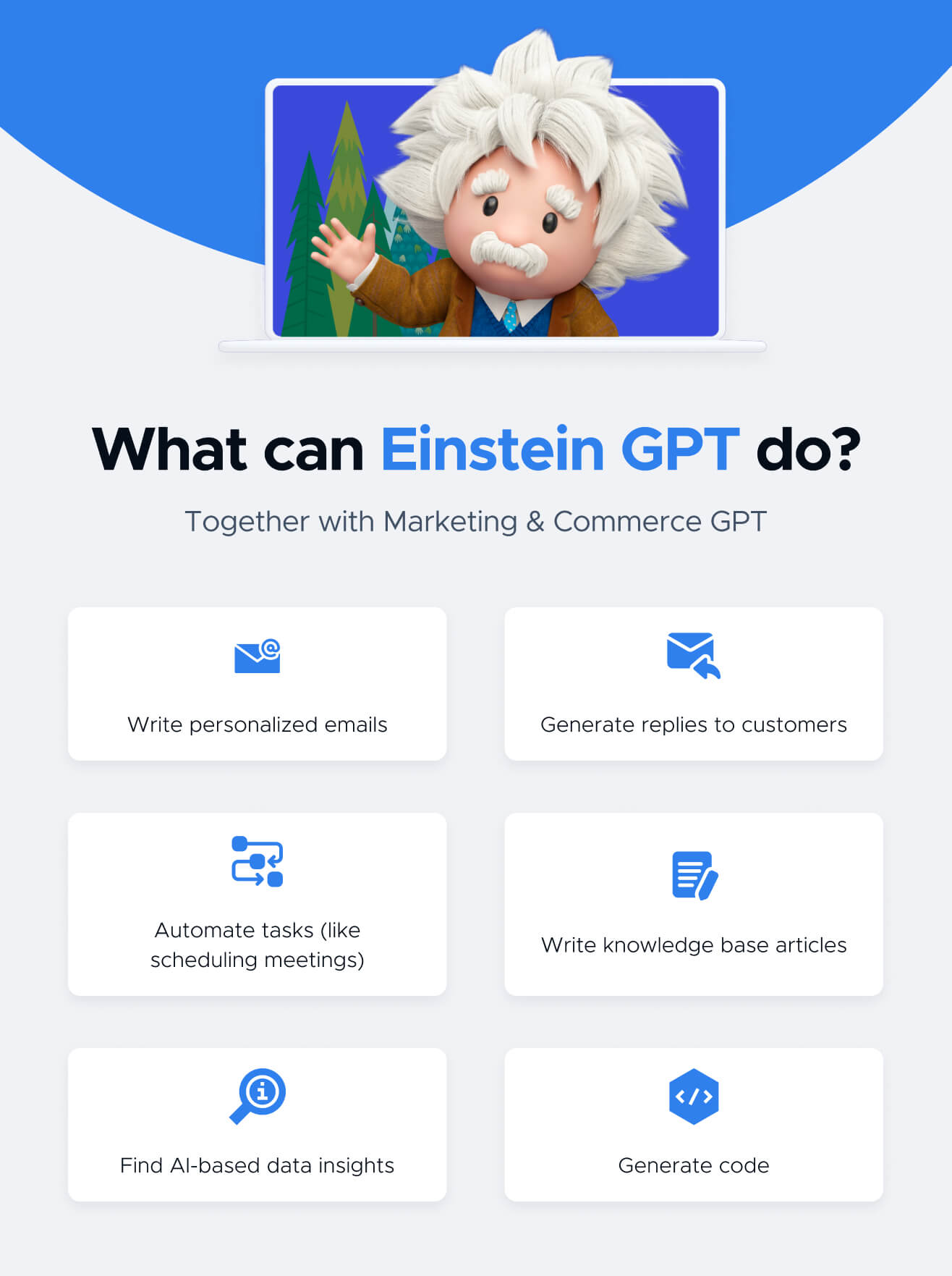
Overall, Einstein GPT can:
- generate personalized emails for salespeople using customer data;
- write specific and context-relevant responses for customer service professionals to answer customer questions faster (yes, Einstein GPT will read the thread and then give out a reply based on it);
- automate tasks on demand like scheduling meeting;
- compose targeted content for marketers to increase campaign response rates;
- create knowledge base articles from past case notes;
- deliver AI-powered customer insights (for example, send in Slack) like smart summaries of sales opportunities
- auto-generate code for developers.
Together with Eistein GPT, Salesforce has also delivered separate solutions for platforms based on the use cases within the platform. Such include Marketing and Commerce GPT, Tableau GPT, Slack GPT.
Einstein GPT is open and extensible – supporting public and private AI models purpose-built for CRM – and trained on trusted, real-time data. Einstein GPT will integrate with OpenAI to provide Salesforce customers with out-of-the-box generative AI capabilities. However, if you're about to integrate ChatGPT for enterprise into the Salesforce ecosystem, you may need to consult the AI experts for a smooth implementation. Check out how our BotsCrew team helps companies execute more efficiently with GPT chatbots.
How to Use Chatbots for Salesforce
The goals of a Salesforce chatbot can vary depending on the business. It can support sales, customer support, HR, and other departments. Overall, the mission of any chatbot is to serve up what your customers need without involving an employee to be involved.
One of the brightest benefits of chatbots for Salesforce is 24/7 availability. Bots will look into customer issues immediately using the information stored in Salesforce.
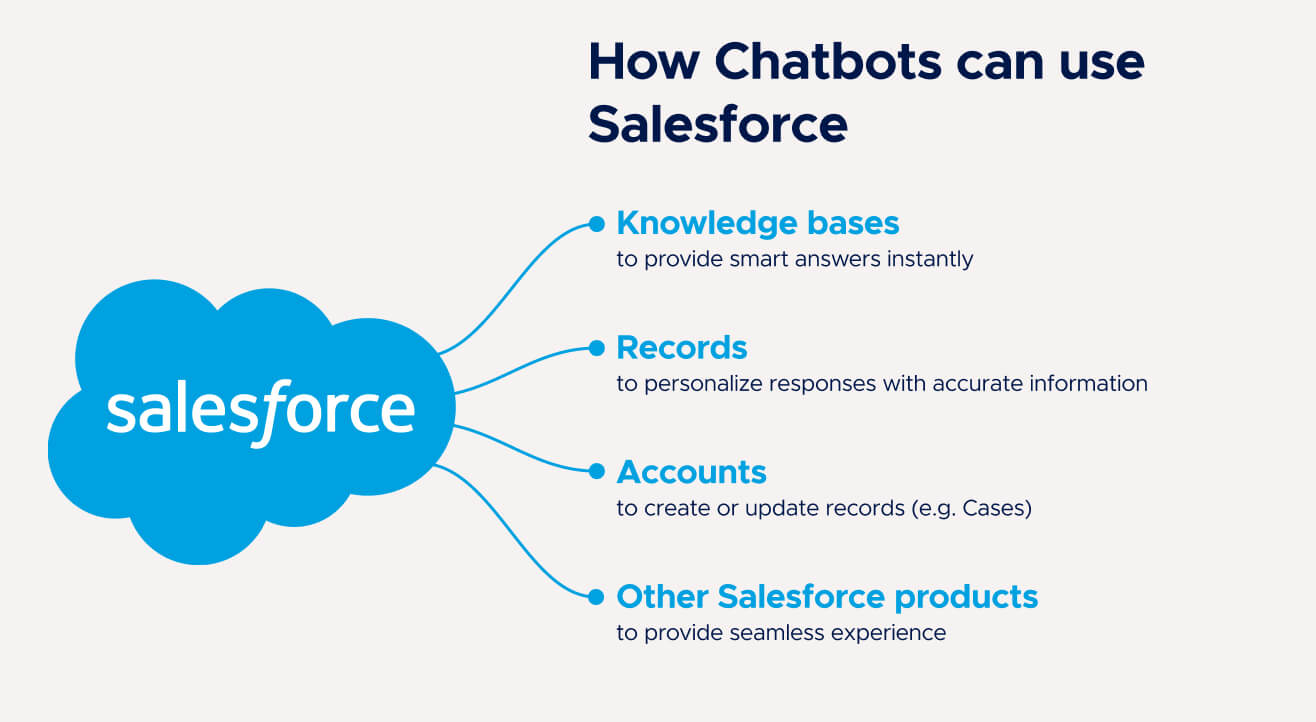
There are multiple chatbot use cases for different industries. Some other common Salesforce chatbots use cases are:
Customer service: Chatbots can help customers with common questions and issues, such as resetting passwords, tracking orders, and answering frequently asked questions. With Salesforce, chatbots can provide answers via Knowledge Articles, search for records, and provide updates on these records (e.g. Orders, Cases).
Lead generation: Chatbots can engage with website visitors, collect contact information, and qualify leads. In Salesforce, they can manage records in the CRM or create leads and cases. To enhance the efficiency of these processes, businesses can benefit from understanding Google Analytics integration with Salesforce, which provides valuable insights into customer interactions and helps optimize lead management strategies.
Sales support: Chatbots can assist sales teams with tasks such as scheduling meetings, sending follow-up emails, and updating customer records.
Marketing & CX automation: Chatbots can help automate marketing tasks like sending promotional messages. With Salesforce, chatbots are handy at collecting feedback and conducting satisfaction surveys.
Employee support: Chatbots can assist employees with tasks such as HR inquiries, IT help desk support, and internal knowledge management.
How to Implement a Chatbot in Salesforce
Getting started with chatbots for Salesforce is much easier than it seems. To try a chatbot, it’s enough to toggle the switch to “On” in service cloud settings.
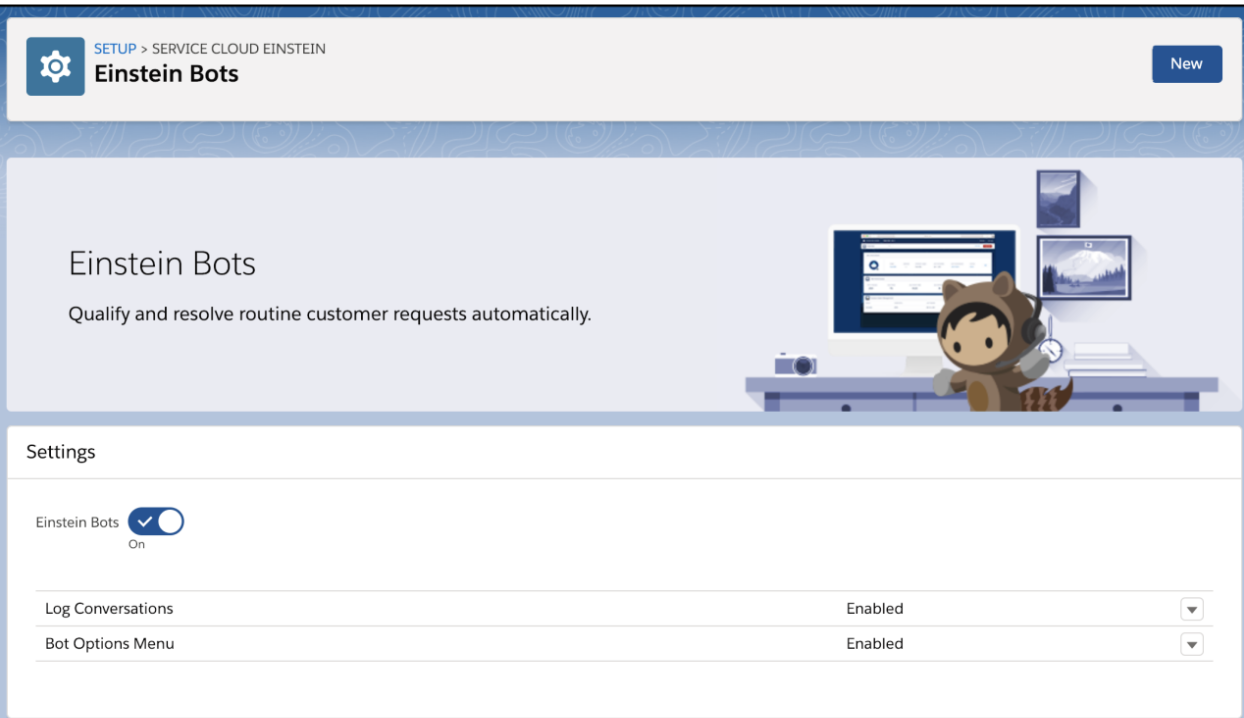
Yes, it’s that easy!
But before going full in and putting a chatbot on the frontline of customer support, there are a few important things to consider first.
Step One: Research chatbot features and set measurable goals
Start with learning what Salesforce chatbots can do. Can these features build a solution to the pain points/optimization opportunities you’re trying to address? We covered some of the Salesforce features above, but here are additional chatbot features you should know:
Dialog & user journey management: the bots are not just messages with buttons. They can manage complex conversations using decision trees to ensure a smooth and engaging dialogue. They can turn visitors into leads and customers with the right implementation.
Tip: try to focus on the areas that can be automated easily. Consult the support or sales teams to build flows that are easy to understand without human intervention.
Intent recognition: The bots are trained to recognize customer intents and can provide personalized responses based on previous interactions, customer data, and contextual information.
Tip: check the wording of the most popular queries of customers to train the chatbot for the best performance.
Natural language processing (NLP): Salesforce chatbots use NLP to understand and interpret customer inquiries, allowing for more natural and personalized interactions.
Tip: you can also train chatbots on your company's data for better performance and understanding of user queries.
Chatbots are Multilingual: they can answer in multiple languages if you provide the necessary information and training.
Tip: If your business runs worldwide, consider starting with the language of the most popular region.
Channels Available: Website, WhatsApp, Facebook Messenger, SMS.
Tip: What channel is the most popular for your customers or team? It’s a good starting point.
These features will help you understand chatbot capabilities. But to measure the success and estimate the ROI, it is important to set distinct chatbot goals.
Check out the resources in Salesforce Help to learn more about what you can achieve with a bot. For example, the Einstein Bots Learning Map is a great place to start. Or you can dig into the Bot Builder to get hands-on right away.
The next step is deciding what you want your bot to do for your company and how to achieve these goals. They should be specific and measurable to achieve the best result. Based on them, you can define your use case and build a chatbot to match it. Here are some resources for you to set goals and plan the chatbot structure:
Next, think about the implementation options.
Step Two: Pick the Salesforce chatbot option
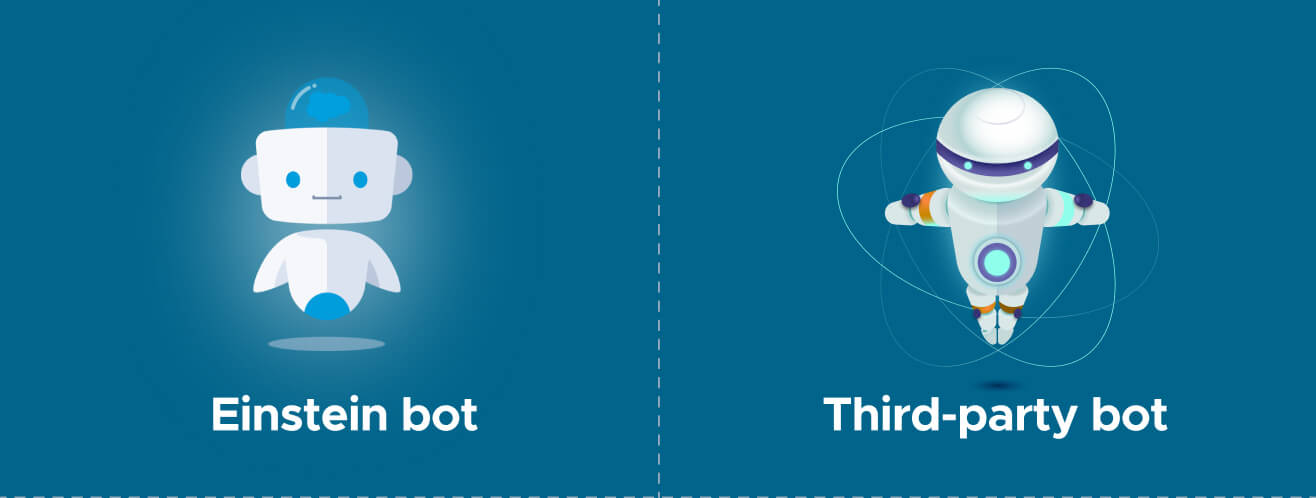
There are two main options for a Salesforce chatbot: Einstein bots and third-party chatbots.
The first option is available in Salesforce natively (in specific plans), the other one can be implemented by building a separate chatbot with Salesforce integration.
Einstein Bots are a native feature of Salesforce available in Salesforce Classic and Lightning Experience. They are very quick to set up and start using.
It’s a no-code solution that lets you quickly get your bot off the ground. With Einstein Bots, you can simply include the existing objects and data in Salesforce without any third-party integrations. These can include Knowledge bases, articles, templates, and all contact information stored in the CRM.
Einstein bots can be powered with Natural Language Processing (NLP) to have your bot deeply understand what your users are saying. Also, you can incorporate Flows and Apex Code to execute custom business logic within Salesforce – so a chatbot does much more than just reply to FAQs.
To start with the Einstein bot, a company must obtain a Service Cloud license and a Chat or Messaging license. Each org is provided 25 Einstein Bots conversations per month for each user with an active subscription. Companies must obtain the Service Analytics App to make full use of the Einstein Bots Performance page.
It’s very easy to give Einstein bots a try. A set-up can take one hour – you can even download bot templates from AppExchange. Check out the full instructions for Einstein bots here.
FREE: Generate a GPT chatbot based on your website data. See it in action for your business.
Custom chatbots are bots built by third-party developers. This solution is built independently and then integrated with Salesforce. There is plenty of chatbot development companies and chatbot platforms that you can choose from.
Why build a custom chatbot if there’s a native chatbot available?
Custom chatbots are much more adaptable and flexible than native Salesforce chatbots. With a separate platform or chatbot team, a chatbot can obtain much more features and functionality than Salesforce has to offer.
For example, custom chatbots can be integrated with any tools you use, not just Salesforce, such as customer relationship management (CRM) or inventory management systems. This can provide a more seamless experience for customers and streamline internal processes. They can also be connected to innovative AI technologies, becoming a GPT-3.5 chatbot, like a recently hyped ChatGPT. This can potential improve the chatbot performance and save costs for business. Einstein chatbots, on the other hand, offer limited customization options, which can affect the chatbot's accuracy and make them feel generic and impersonal to users.
By hiring a chatbot team, a company can be sure the chatbot is tailored to a business or organization's specific needs and goals.
Custom solutions will obtain the company’s branding (like the tone of voice), and will be trained by the whole team of conversational experts to understand the language of your users, making the conversations with customers more personalized and engaging. By improving efficiency and customer satisfaction, Salesforce chatbots can significantly contribute to long-term business growth across multiple departments. The biggest advantage of a chatbot team is that your solution will always be on the pulse of performance: chatbot fails will be fixed, tech stuff will be covered, and overall maintenance will ensure your employees & users get the best experience possible.
Overall, custom-developed chatbots offer greater flexibility, accuracy, and personalization than templated-based chatbots, making them a better choice for businesses looking to improve their customer experience and gain a competitive advantage.
Einstein Bots VS Third-party Chatbots
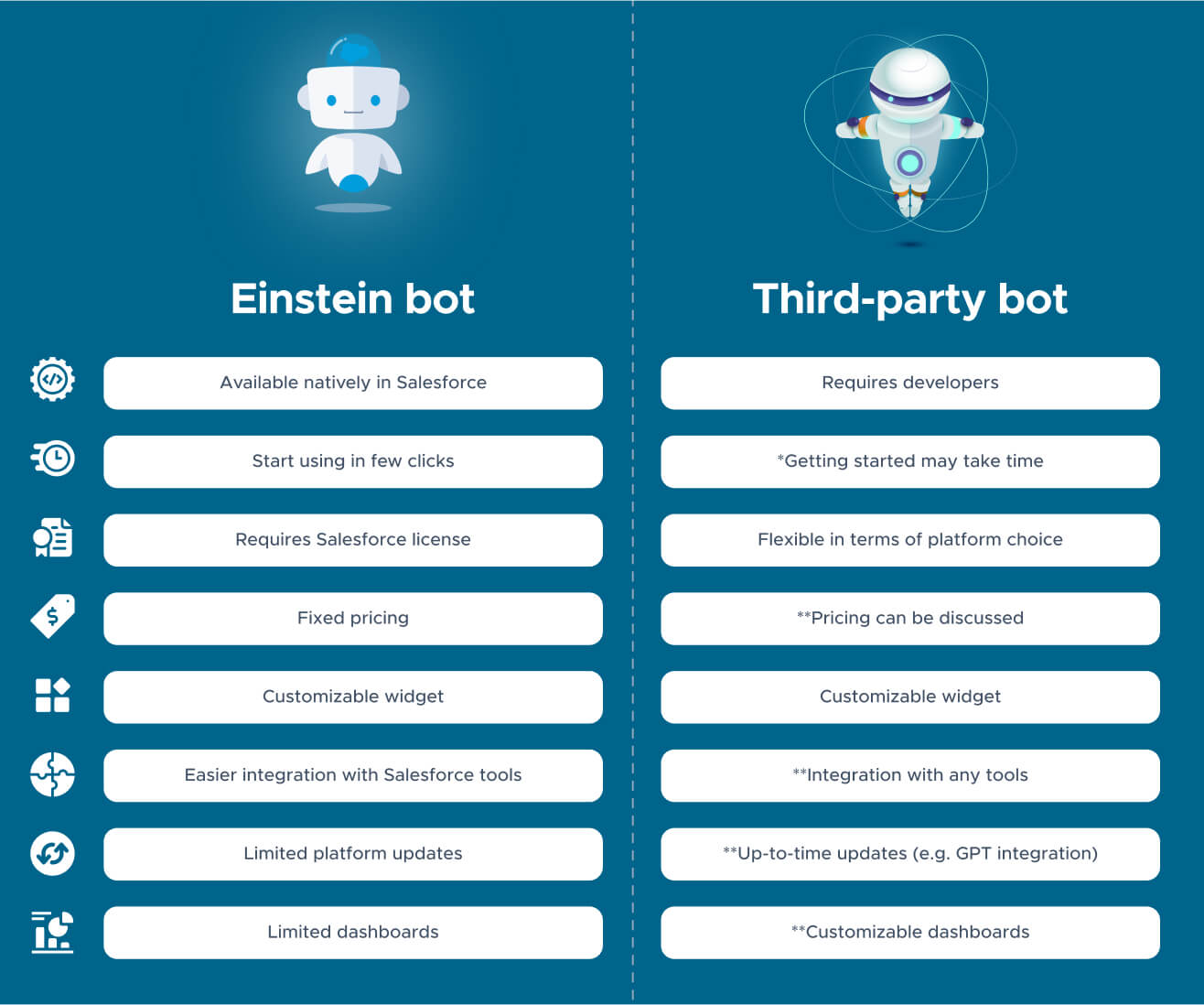
Summary: Einstein Bots are great for setting up a basic self-service chatbot without additional integrations to meet the needs of a small business looking to explore chatbots as a solution for the contact center. For larger companies, custom chatbots could be a better option since they are more flexible in integrations, have regular updates, and offer adjustable pricing for a higher volume of chats.
Step Three: Identify a responsible team and build a chatbot!
With Einstein bots, you can only have one developer's permission to modify chatbots. It’s best to assign a specific person to implement and overview its performance.
With the defined chatbot goals, you can follow these steps to implement a Salesforce Einstein chatbot:
- Follow the technical set-up: make sure to connect the chat and match the requirements as described here.
- Build your chatbot: Build your chatbot following the tips from Salesforce. It will guide you through designing the conversational flow, creating responses to user queries, and integrating with Salesforce items like Knowledge base, Apex, and others. Salesforce has a vast list of articles helping you adjust the Einstein bot features to your needs.
- Test your chatbot: Test your chatbot to ensure that it is functioning as intended. This includes testing the conversational flow, responses, and integration with Salesforce. Does it provide the required answers? Does it perform what a user expects?
- Train your chatbot: Consider connecting NLP and training your chatbot by providing it with relevant data and feedback. This will help improve its accuracy and effectiveness over time.
-
Launch, monitor, and optimize: Monitor the performance of your chatbot and optimize it over time. This includes tracking chatbot metrics such as user satisfaction, conversion rates, and response times to make adjustments as needed.
Alternatively, you can build your own chatbot outside Salesforce and then connect it to Salesforce. There are several criteria to consider when choosing the best vendor:
- Technical expertise: The chatbot team should have a strong technical background in areas such as natural language processing, machine learning, and software development. They should have experience building and deploying chatbots that are scalable and reliable.
- Client references: Ask the chatbot team for client references and case studies. This can help you understand their experience, expertise, and approach to building chatbots. You can also check review platforms like Clutch to see more feedback.
- Innovation: Chatbot technology is evolving rapidly, and it is important to choose an innovative chatbot team that stays up-to-date with the latest trends and chatbot best practices. They should be able to recommend new features and functionality that could help improve the chatbot's performance and user experience.
- Communication skills: Effective communication is critical to the success of a chatbot project. The chatbot team should be able to communicate clearly and effectively with you and other stakeholders throughout the project, providing regular updates and seeking feedback when necessary.
Considering these criteria, you can choose a chatbot team with the technical expertise, industry knowledge, collaboration and communication skills, project management skills, and innovation required to build a successful chatbot.
Final thoughts
Building a Salesforce chatbot can greatly improve your customer service infrastructure. It can provide a quick and efficient way for customers to get what they need based on the information you already have in Salesforce.
Let's help you set up a Salesforce chatbot.
If you want to implement a custom Salesforce chatbot for your business, book a meeting with us. We can help you develop a custom solution that meets your business needs.
Start Your Chatbot Journey Today!
Ready to enhance your Salesforce experience? Get started with a custom chatbot that fits your business needs 🙌




